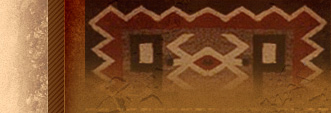 |
 |
| |
Research Surveys |
|
| |
| |
To accomplish the goals of our work, Tapestry carries out two primary types of research:
1. on the relationship between humans and the earth, now and in the past, in different cultures and places, and
2. on the ways people learn intellectually, experientially, spiritually, and mythically.
Both types of work involve finding out how people relate to things -- types of information in one case, and the earth itself in the other. The primary method we use to understand how people relate to information and to the natural world is a research survey.
This is something very different from an opinion poll, with which most people are more familiar. Because you may take part in one or more of our surveys, this page is intended to explain a little bit about how they work.
The first and most important thing for you to understand is that we never share anyone's data with others -- period. And we keep the data we collect in a way that makes it anonymous.
Now to the pertinent question: Why use a survey to learn how people relate to things?
The best way to answer this might be to ask you to imagine two people hiking in a wilderness area. One is a 27-year old woman who grew up in Miami and has hiked only once before in a forest. The other is a 65-year old man from a rural area of Alberta who has spent his life in the wilderness hunting and fishing. You'd like to understand how different people relate to nature, so when they finish their separate hikes you ask them what happened. The young woman tells you she got very hot and tired, and that she scraped her shin on a rock and didn't see so much as a chipmunk for her trouble. The man tells you that he feels restored and refreshed, and that he saw a hawk and two elk.
It might seem that the way to learn how both of these people relate to the land is to simply write down what they said. In fact, that's what most people think a research survey does, is record the answers to a direct question like, "How did you and the land relate to each other on your hike?" But there are many important factors that complicate the picture, and some of them are not immediately apparent.
- People don't report their experiences in the same way. If you ask a little more, you might discover that the woman saw the hawk, too -- but also saw it hunting and was uncomfortable with the violence of the act so she tried to forget about it. The man might have fallen on the same rock she did, but figured a fall is just a normal part of any hike. In other words, the difference in their experiences might not be in what actually happened, but in how they reported it.
- People don't pay the same attention to their surroundings, and so aren't always aware of the experiences they have or might have had. Maybe the woman saw the elk, too, but didn't register what they were. She might have thought they were trees.
- People have different things happen to them. Maybe more animals actually approached the man and crossed his path, whereas they fled the woman's approach and so she didn't see them because they really weren't there.
A research survey is designed to gather information that helps you understand whether the difference in peoples' experiences is due to the way they report what happened, the kinds of things they pay attention to, the actual events themselves -- or to some combination of these factors. And some of those factors might be related to things like how much time the person has spent out-of-doors in the past, where they grew up and how their family and friends thought about the wilderness, and even how old the person is. If you get information from enough people (not just 2), patterns start to show up that can help you see what might be important. For example, it might be that no one from an urban population center sees wildlife on the hike, or that (alternatively) no one who falls and sustains a bad bruise sees any animals on the hike. It's important to learn how to see these patterns and understand them because we can't begin to help people reconnect better to the land until we start understanding why they have the relationships they already have.
This page is only an introduction to the ways we do our research and the kinds of questions we're exploring. We will report and explain in more detail in the separate sets of publications that result from each study we do. For now, we hope you can see why research, and particularly surveys, are an important part of most of our events. |
 You can read preliminary survey analysis results for the Voice of the Horse Project here.
You can read preliminary survey analysis results for the Voice of the Horse Project here.
|
 |
|
|
|
 |
|
|

